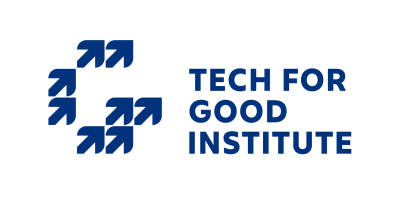Reaching New Heights: Southeast Asia's Digital Economy

External Consultant, Tech for Good Institute

Southeast Asia's digital economy is expected to reach $1 trillion in gross merchandise value by 2030. Photo credit: ADB.
Closing the digital divide, broadening digital participation, nurturing nascent sectors, and establishing the right policies are key in developing the region's potential.
This article is published in collaboration with the Tech for Good Institute.
The digital economy in Southeast Asia (SEA) continues to forge ahead amidst global economic challenges, as unveiled by the latest e-Conomy SEA 2023 report. Published by Google, Temasek, and Bain & Company, the comprehensive report forecasts SEA’s digital economy to surge, reaching a significant milestone of $100 billion in revenue in 2023. Notably, this remarkable growth represents a staggering 1.7x increase compared to the region’s gross merchandise value (GMV). GMV refers to the total value of sales over a given period.
For SEA’s digital economy to meet its trajectory of $1-trillion GMV by 2030, here are some key insights from the report for governments, investors, digital businesses, and nonprofits.
Resilience amid global challenges. Southeast Asia has demonstrated resilience in the face of global economic headwinds, maintaining stable gross domestic product (GDP) growth, controlled inflation rates, and promising economic upswings, particularly in sectors like travel. The region’s ability to weather the storm is evident in stable economic indicators, showcasing encouraging increases in regional foreign direct investment inflow (36%), exports (32%), and travel demand (40%). This resilience signifies not only a bounce-back but also a solid establishment of the region’s economic strength against global volatilities, especially in transport and travel.
Investment realignment and challenges. While expected, the global-wide decline in private funding signals a significant shift within Southeast Asia’s investment landscape, nudging businesses toward self-sufficiency and heightened efficiency. This recalibration is a response to increased costs of capital and intensified competition, urging digital players to prioritize sustainable long-term growth. Additionally, challenges persist in meeting divestment targets and realizing returns. Despite the challenging funding environment, dry powder capital—which refers to cash and other highly liquid securities—is on the rise in SEA, reaching $15.7 billion in 2022. This underlines the opportunity and need for dependable exit strategies to garner investor confidence and continuity in the region’s investment ecosystem.
Monetization and sustainable growth. The pivot toward monetization within the digital realm showcases Southeast Asia’s conscientious efforts to strike a balance between revenue generation and overall market growth to achieve profitability targets. Efforts have borne fruit, with GMV expected to grow at 11% to $218 billion in 2023. Notably, sectors like e-commerce, travel, and transport demonstrate adaptability, maintaining growth trajectories while diversifying revenue streams. This strategic shift emphasizes the maturing of the region’s digital landscape, placing a premium on profitability without sacrificing expansion or consumer engagement, marking a critical milestone toward sustainable growth.
Digital financial services and high-value user engagement. The rapid adoption of digital financial services (DFS) marks a significant inflection point. Digital payments, now constituting over 50% of the region’s transactions, reflect a shifting trend away from traditional payment methods. This is in line with the recent findings of the Tech for Good Institute (TFGI) that points out that trust in DFS providers is high in Southeast Asia. DFS, notably digital lending, emerges as a substantial revenue driver amid increasing competition between pure-play fintechs and traditional financial institutions. High-value users (HVUs), representing the top 30% of spenders, play a pivotal role, contributing over 70% of the digital economy spend. However, there is untapped growth potential in expanding digital participation among non-HVUs.
Digital inclusion and regional growth. While strides have been made in digital inclusion, the report underscores the widening digital economic divide, particularly outside metro areas. Bridging this gap necessitates collaborative efforts across stakeholders, including investors, digital businesses, non-profits, and governments. Addressing challenges of cost-efficient supply models to serve a broader set of consumers and enhancing their digital literacy emerge as a critical need in order to ensure meaningful participation in the digital economy—propelling regional growth. Addressing these gaps will not only democratize access but also drive holistic economic growth by ensuring no segment gets left behind in Southeast Asia’s digital revolution.
In summary, the region's favorable demographics, growing wealth, and an increasingly urbanized population create an environment conducive to sustained profitability. Yet to harness this potential and unlock the future, it is important to first acknowledge that the digital divide persists, with 150 million in Southeast Asia, especially the underserved, lacking access to digital technologies. The region must focus on broadening digital economy participation, nurturing nascent sectors (including the 71 million micro, small, and medium-sized enterprises, or MSMEs, which account for some 97% of all businesses in the region), investing in physical infrastructure, and establishing supportive regional policies and regulations.
This article was first published by the Tech for Good Institute on 2 January 2024.

Ian Liu
External Consultant, Tech for Good InstituteIan Liu is a technology services and digital communications expert based in Singapore. He is currently pursuing his master's in IT in business at the Singapore Management University.

Tech for Good Institute
The Tech for Good Institute is a nonprofit organization working to leverage the promise of technology and the digital economy for inclusive, equitable, and sustainable growth in Southeast Asia. The Institute is seed funded by Grab, a leading superapp in Southeast Asia.


